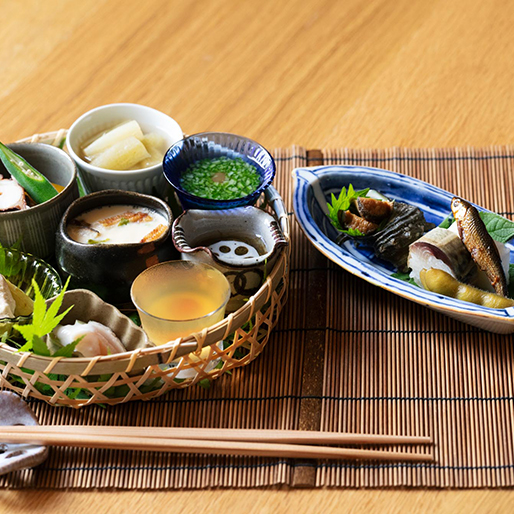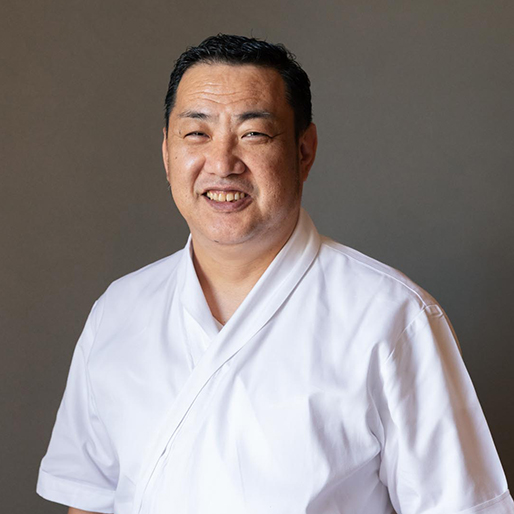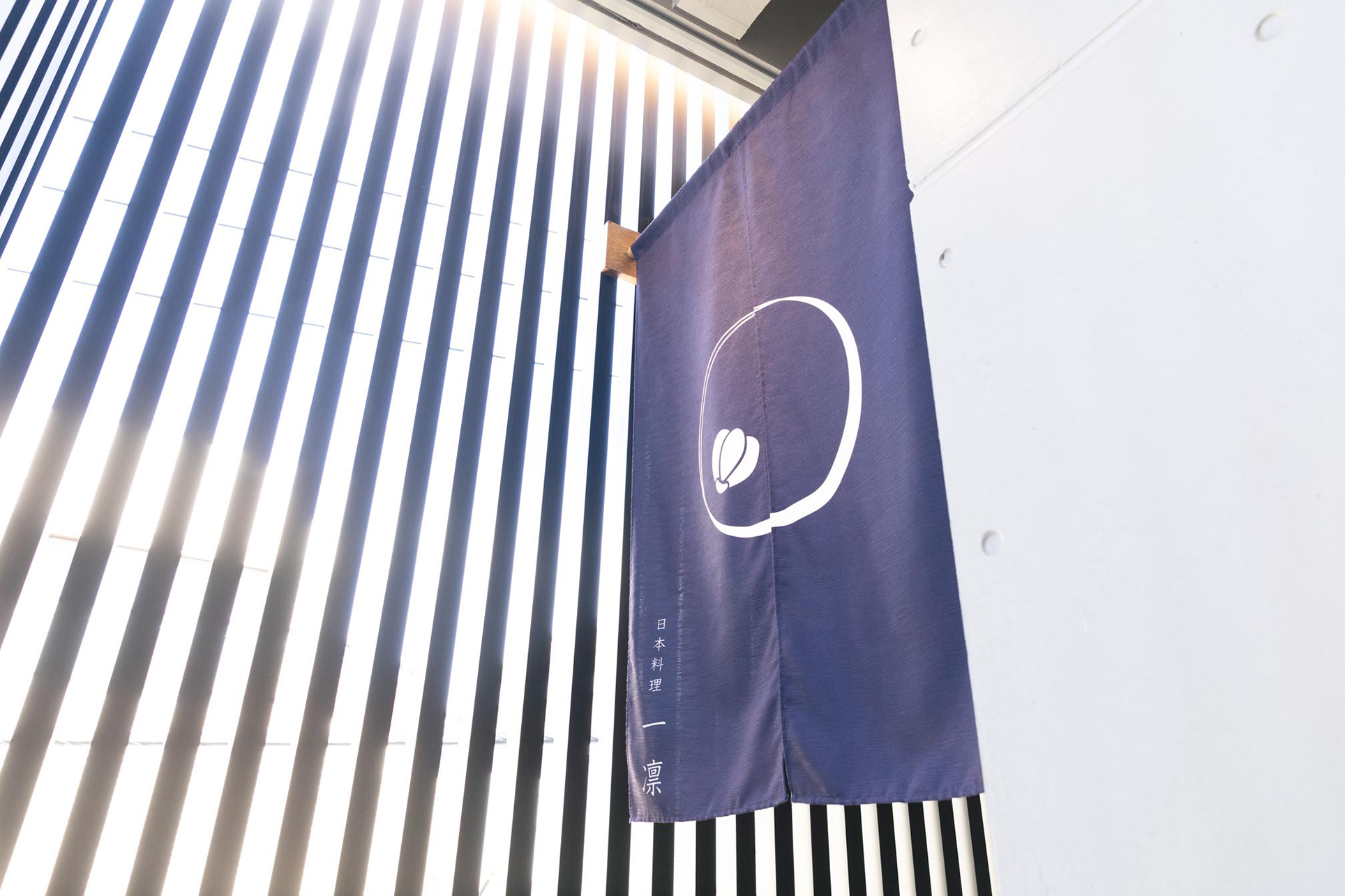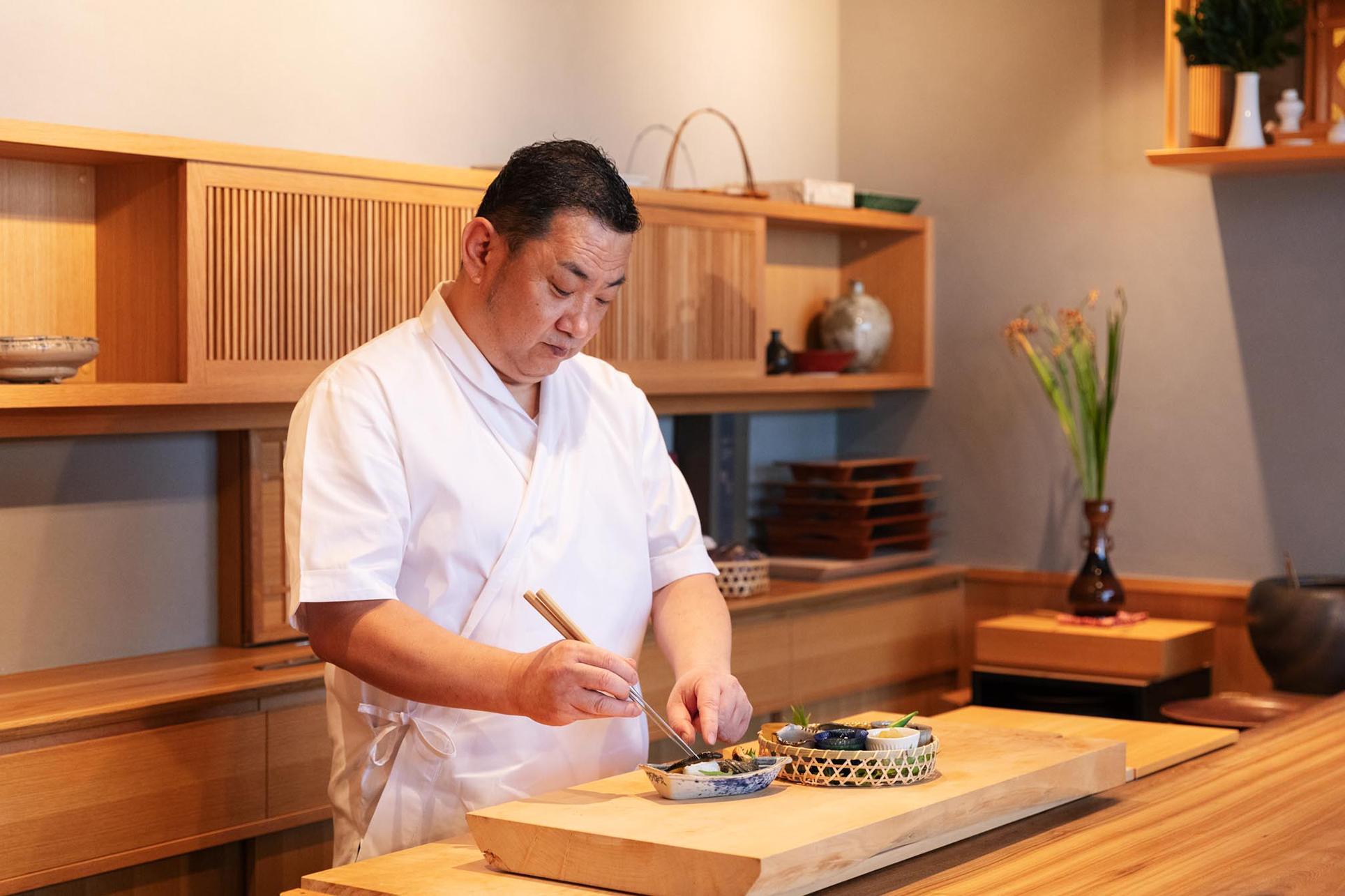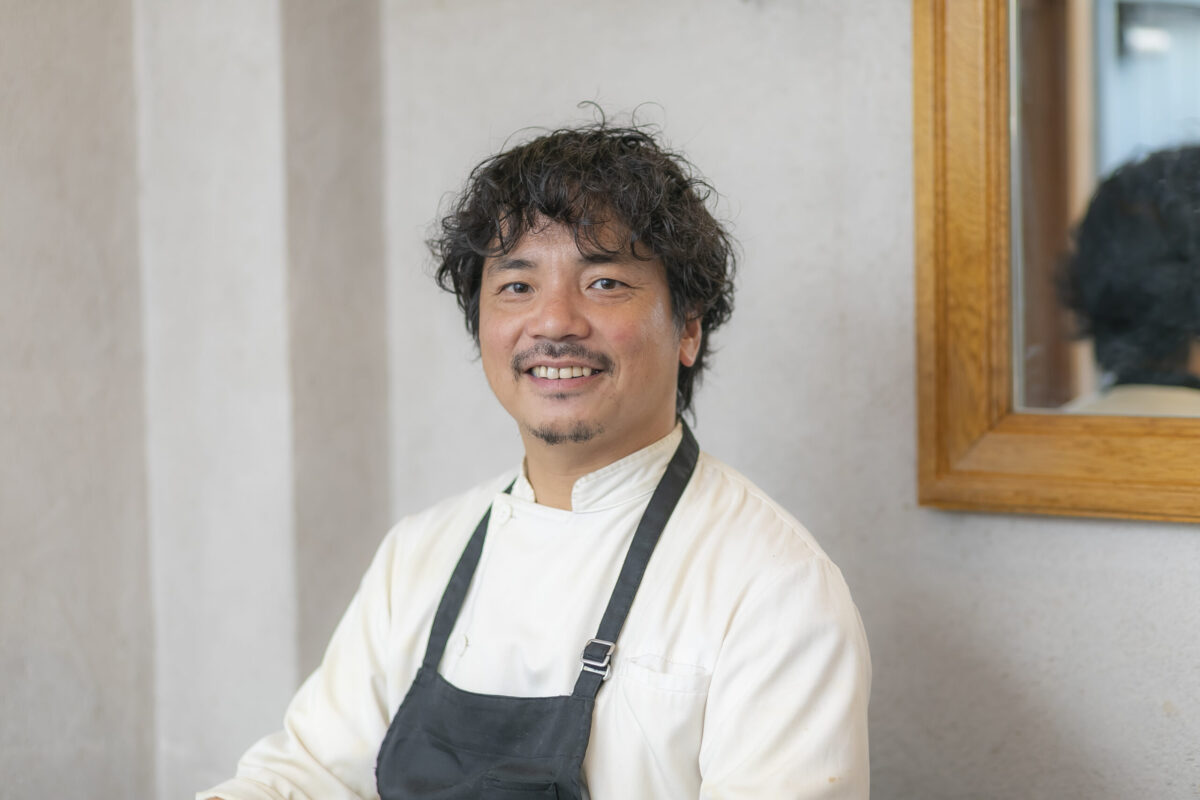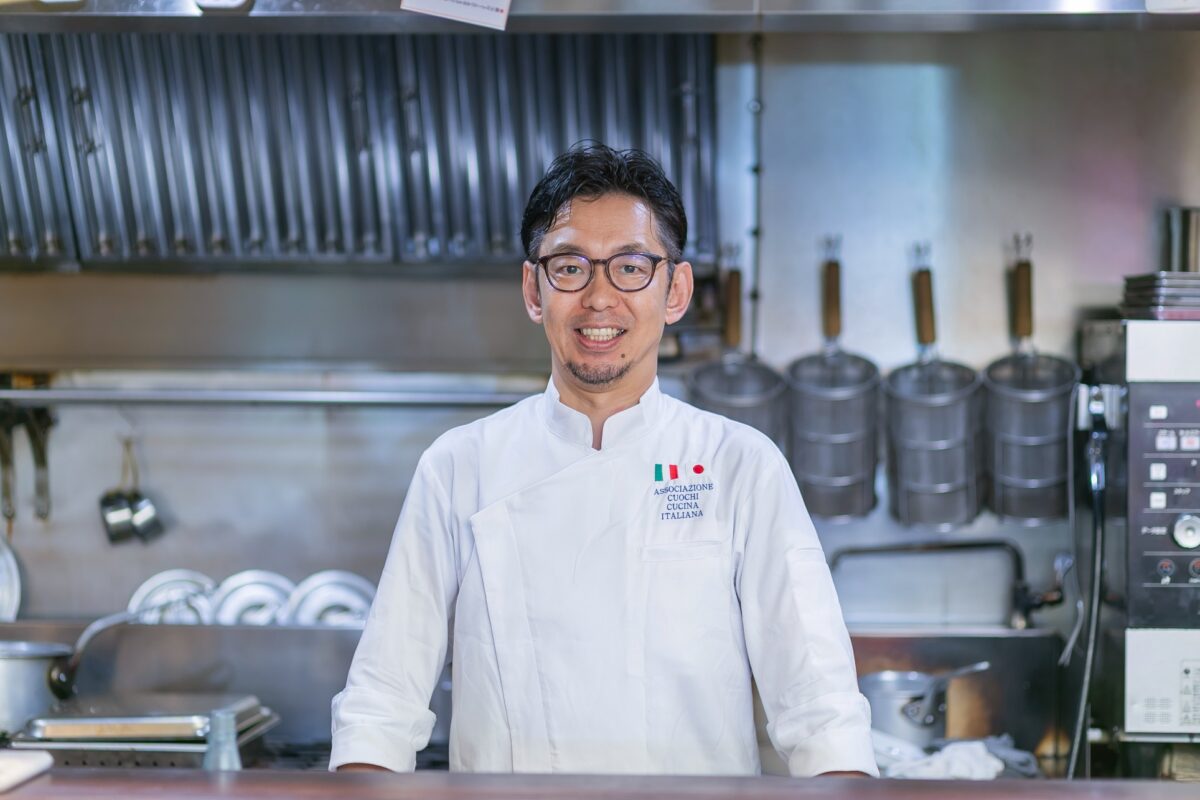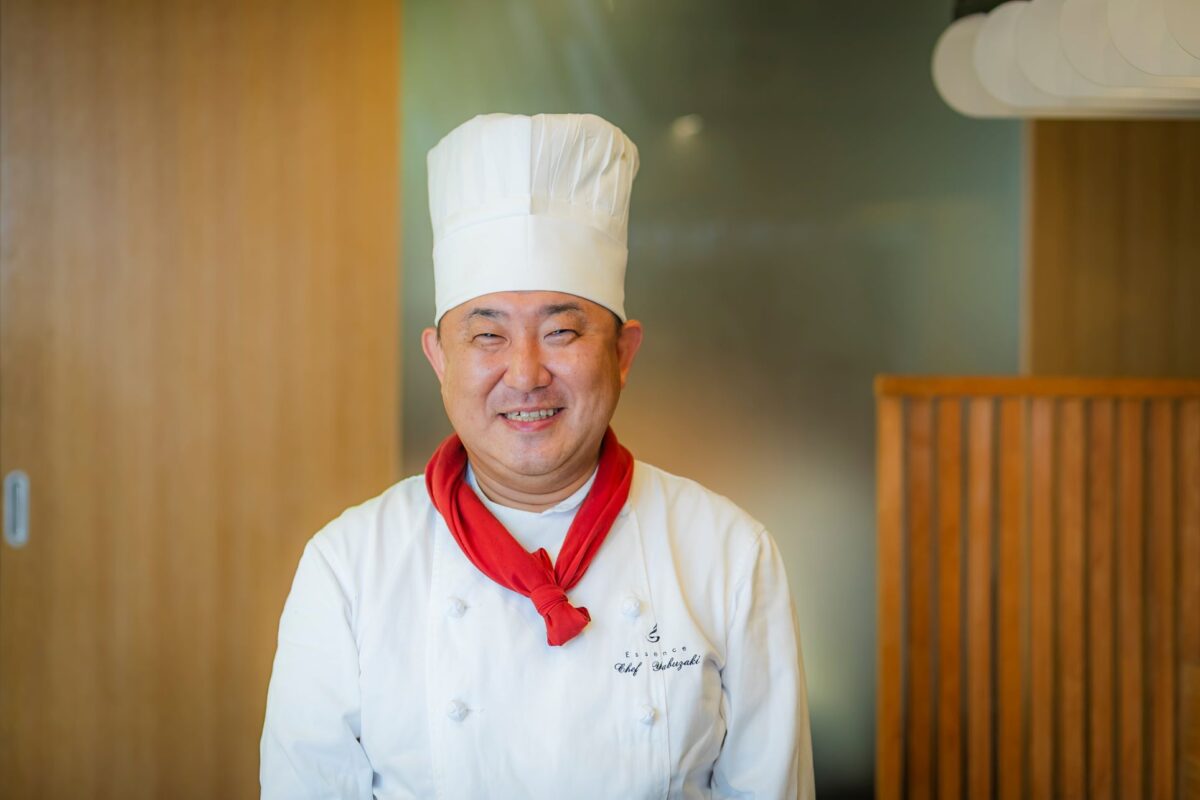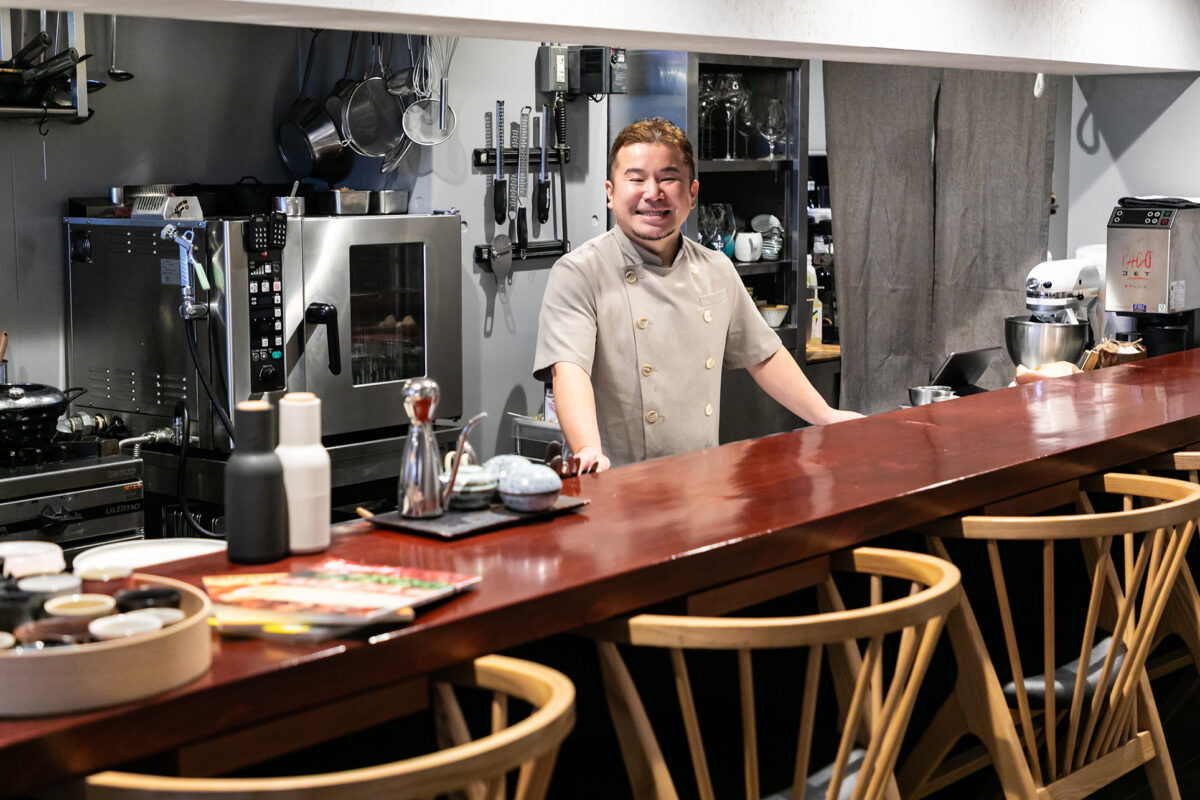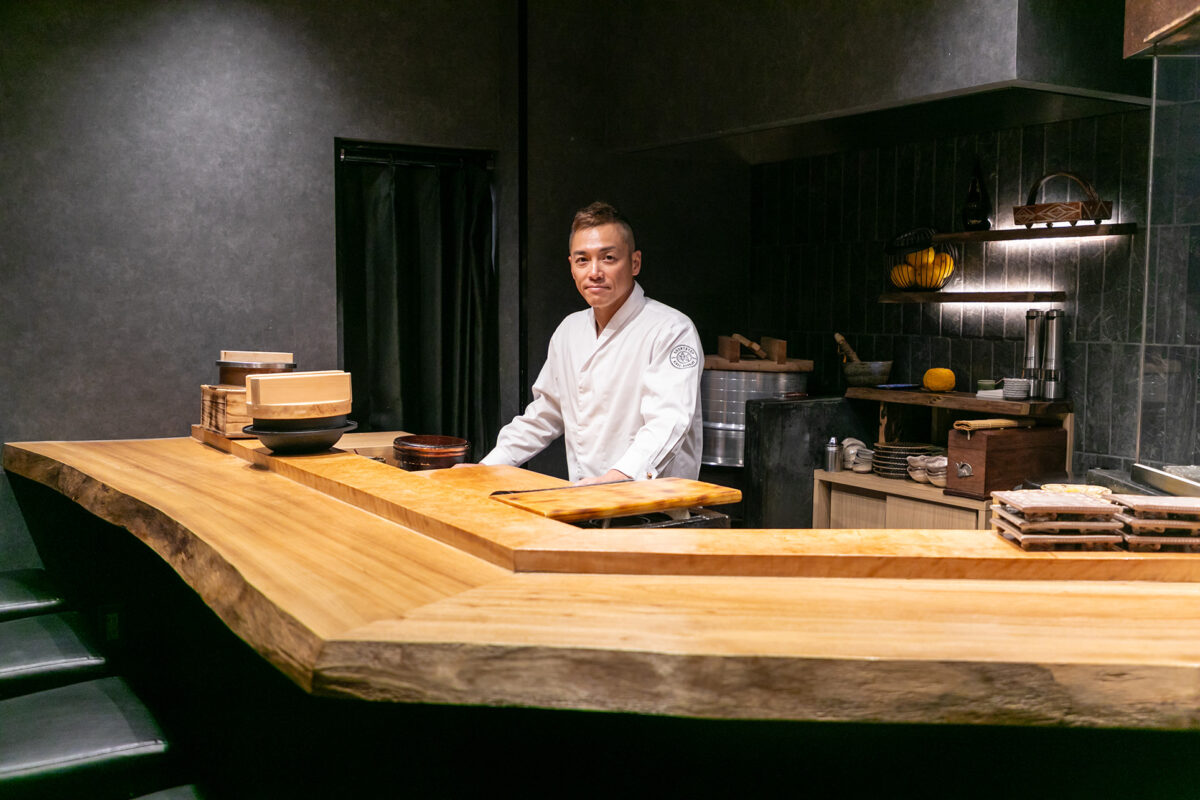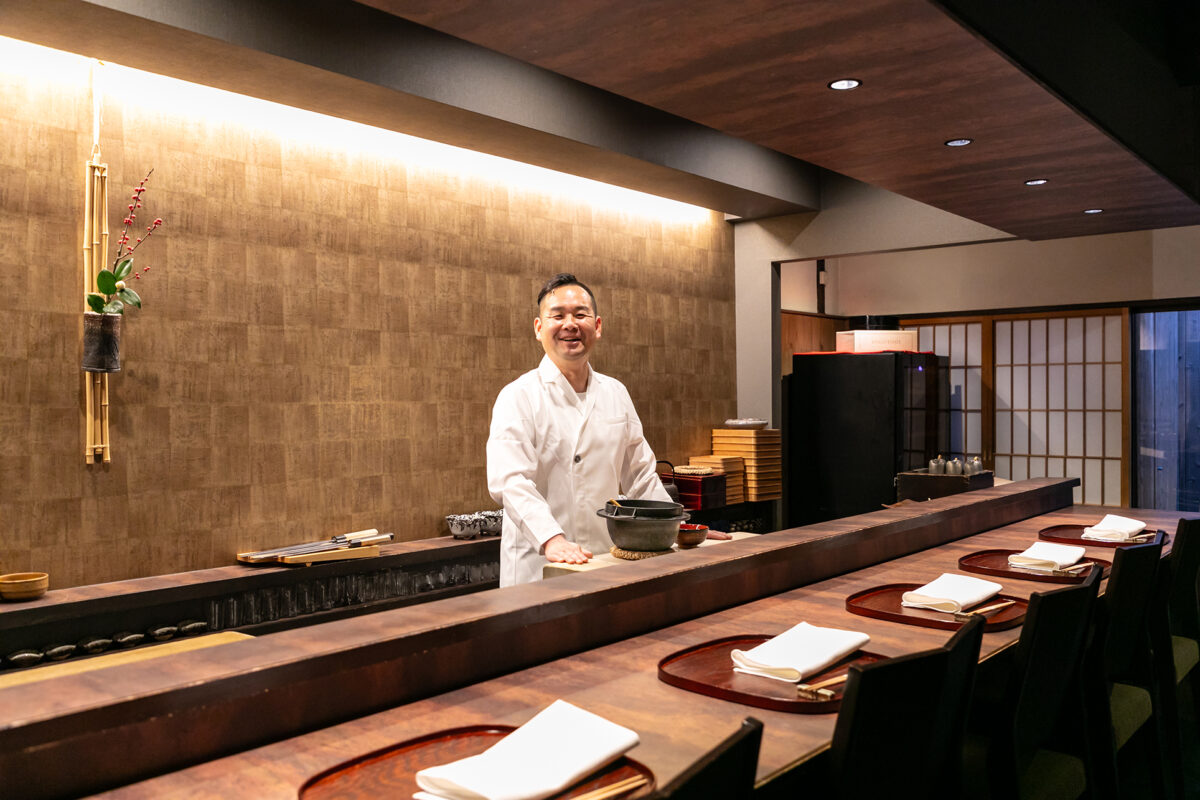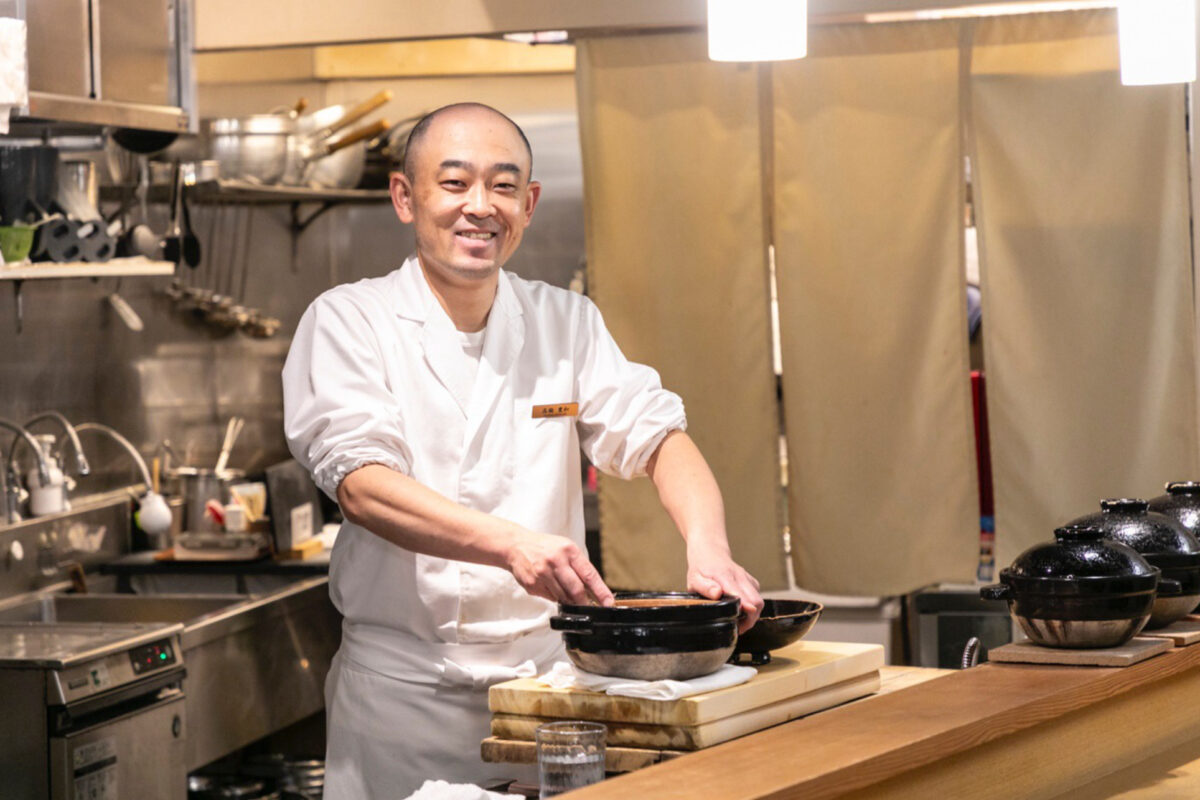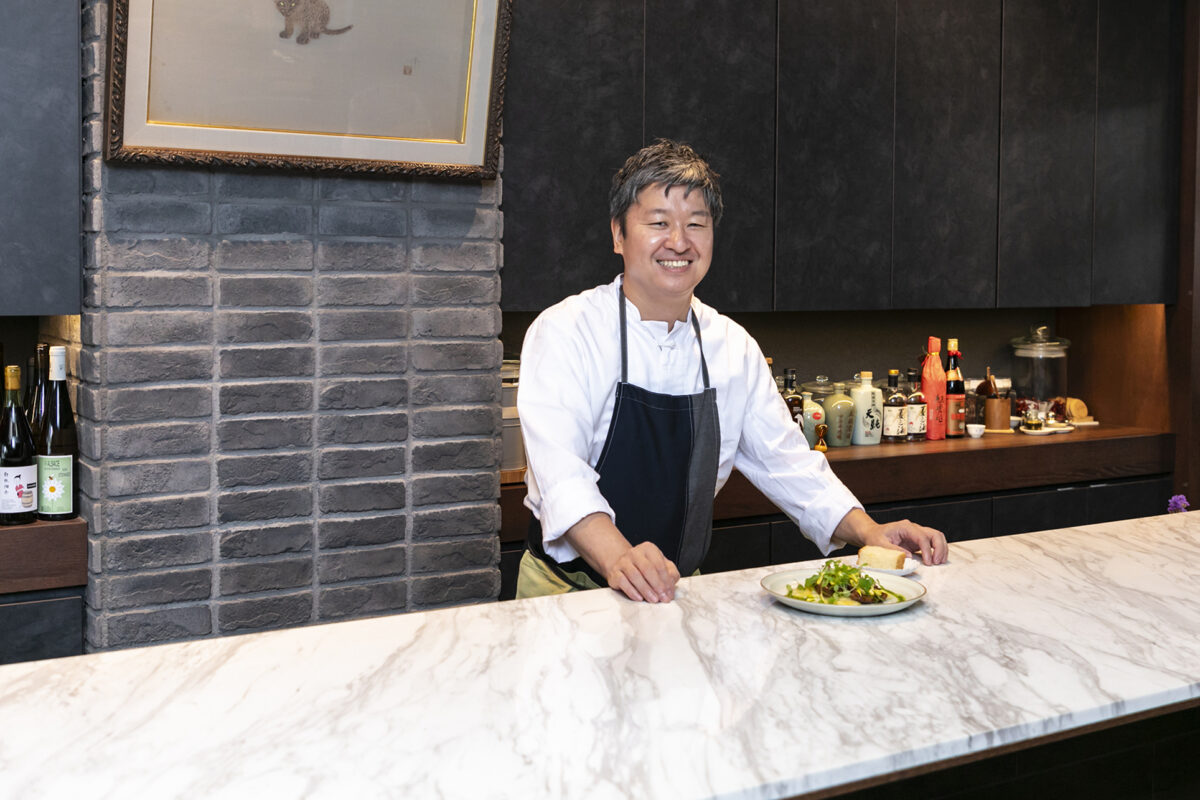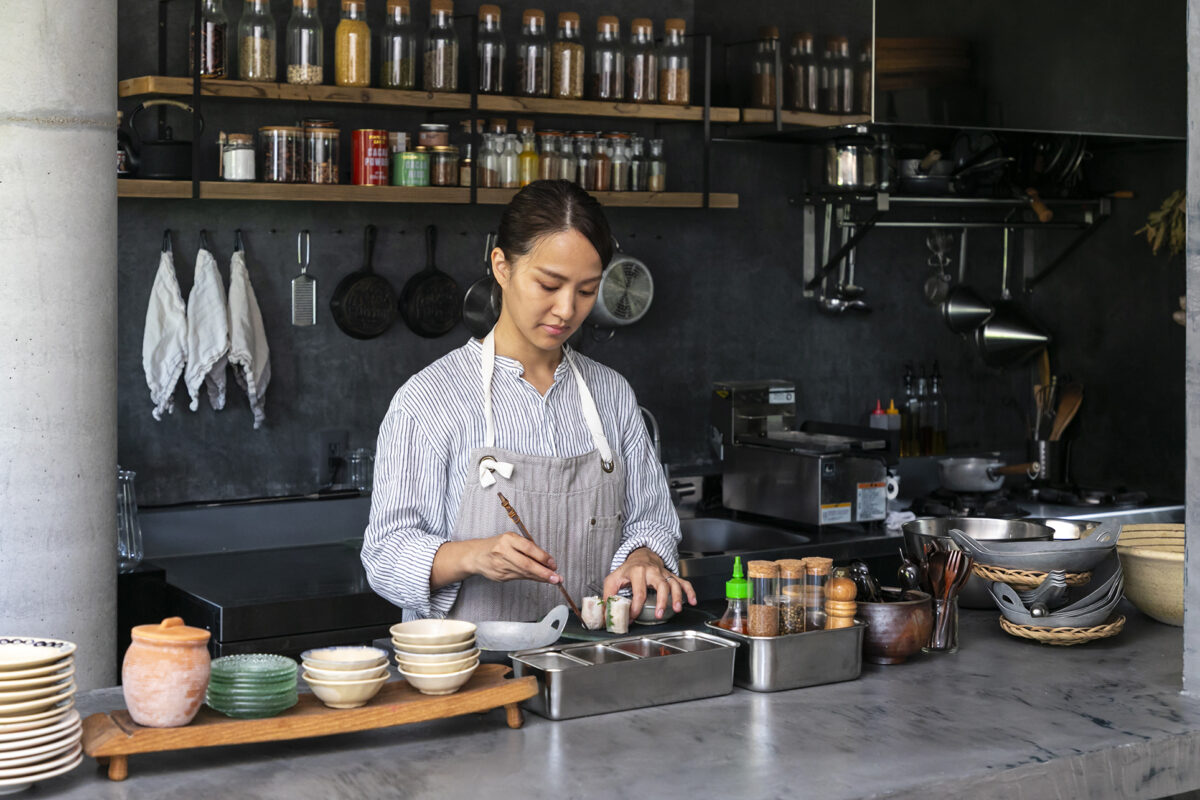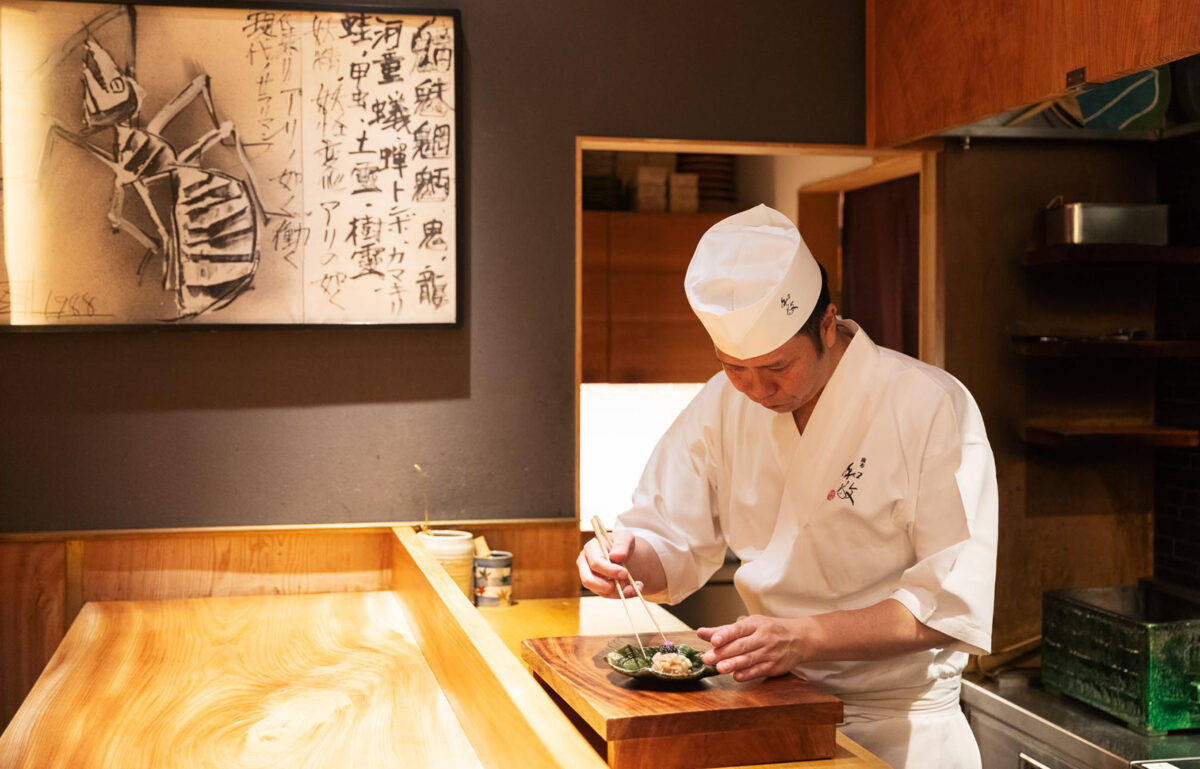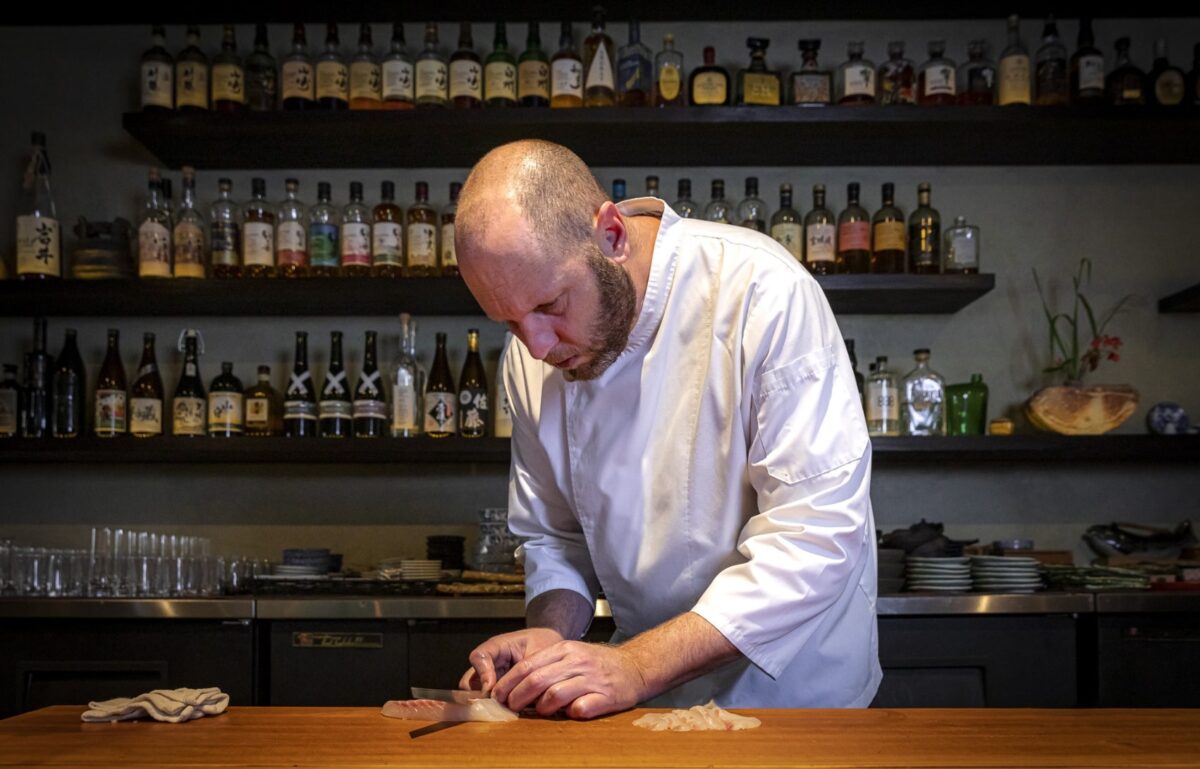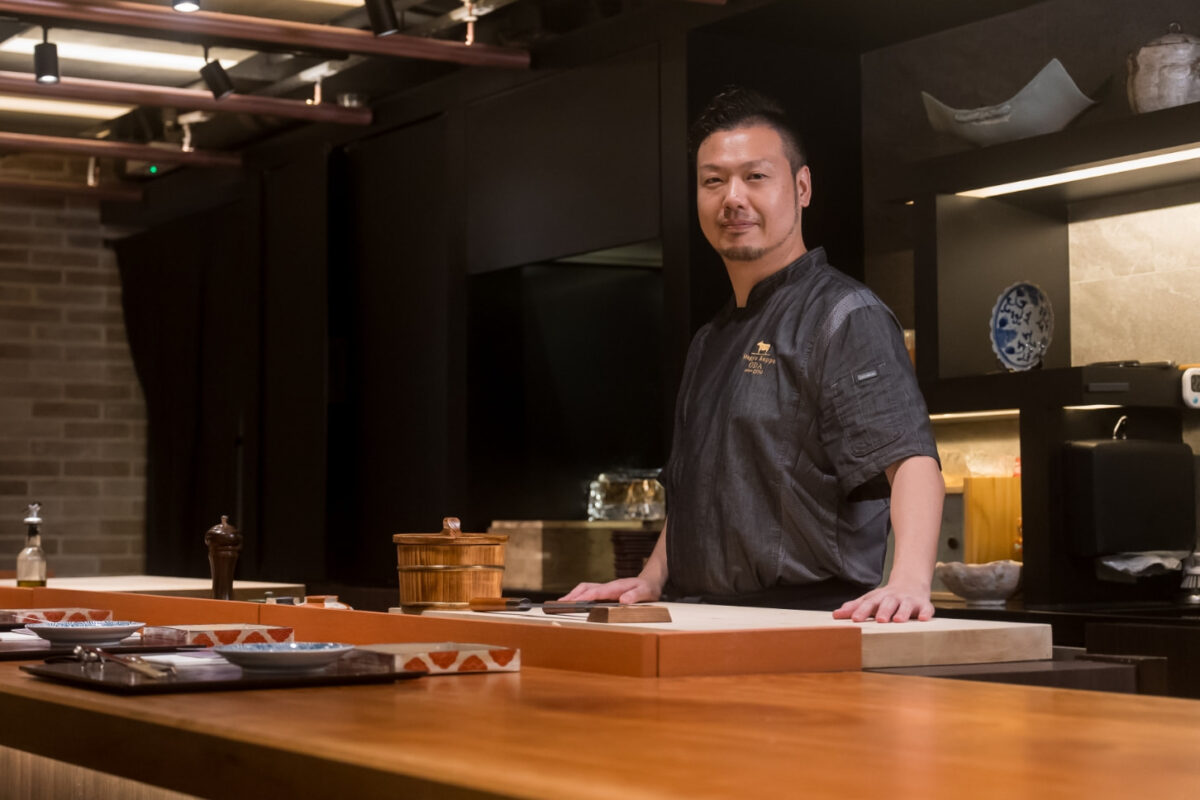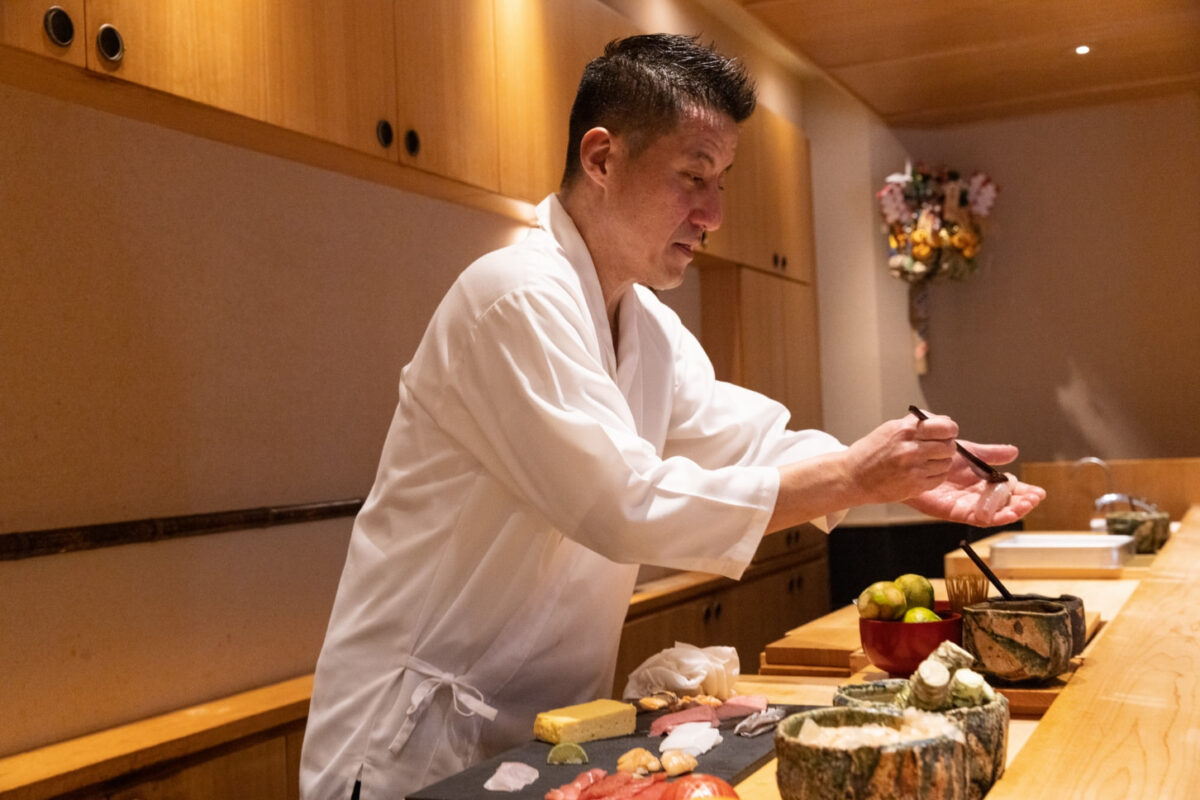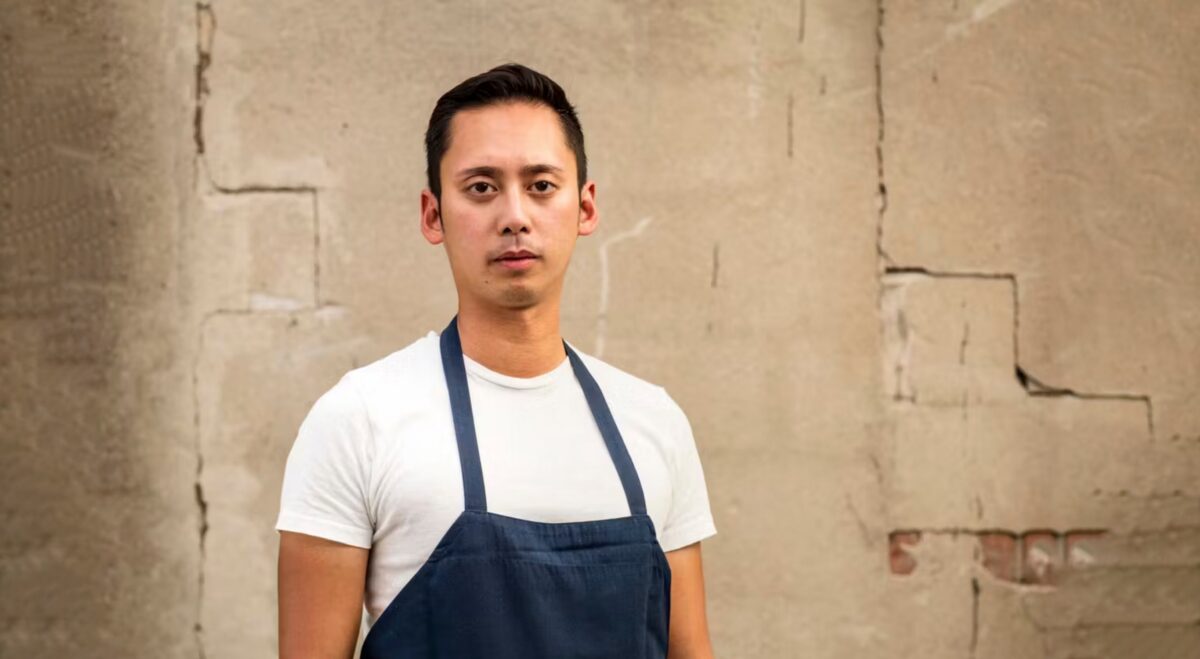NIHONRYORI ICHIRIN
Inheriting the food culture of his hometown, Kyoto. Exploring the potential of regional ingredients while preserving the heart of Japanese cuisine
Nihonryori Ichirin, which has continued to win over a wide range of fans since its establishment, is a Japanese kaiseki restaurant located in Kagurazaka in Tokyo’s Shinjuku-ku. Kyoto native Mikizo Hashimoto began his culinary career at the age of 18. He honed his skills at a venerable local ryotei restaurant, where he was exposed to the history and culinary culture that has been passed down from generation to generation. Hashimoto handles both cooking and guest service himself, and offers course meals that respect the traditions of Japanese culinary culture, while at the same time infusing them with new potential. Not only with the quality of the food, but also with Hashimoto’s genuinely charming personality and lively conversational skills captures the hearts of its guests, with at times up to 70% of customers coming from abroad. He enthusiastically travels throughout Japan to the places where the ingredients are born, and sublimates them into his own dishes.
In addition to his restaurant operations and media appearances, Hashimoto also focuses on promoting Japanese rice and continues to pursue the appeal of rice through the Japan Food Labo, which he established with a rice meister and other professionals who handle regional foodstuffs. The pot-cooked rice served at the end of the course is ordered from a trusted farmer and served as white rice so that the umami of each grain can be fully enjoyed.
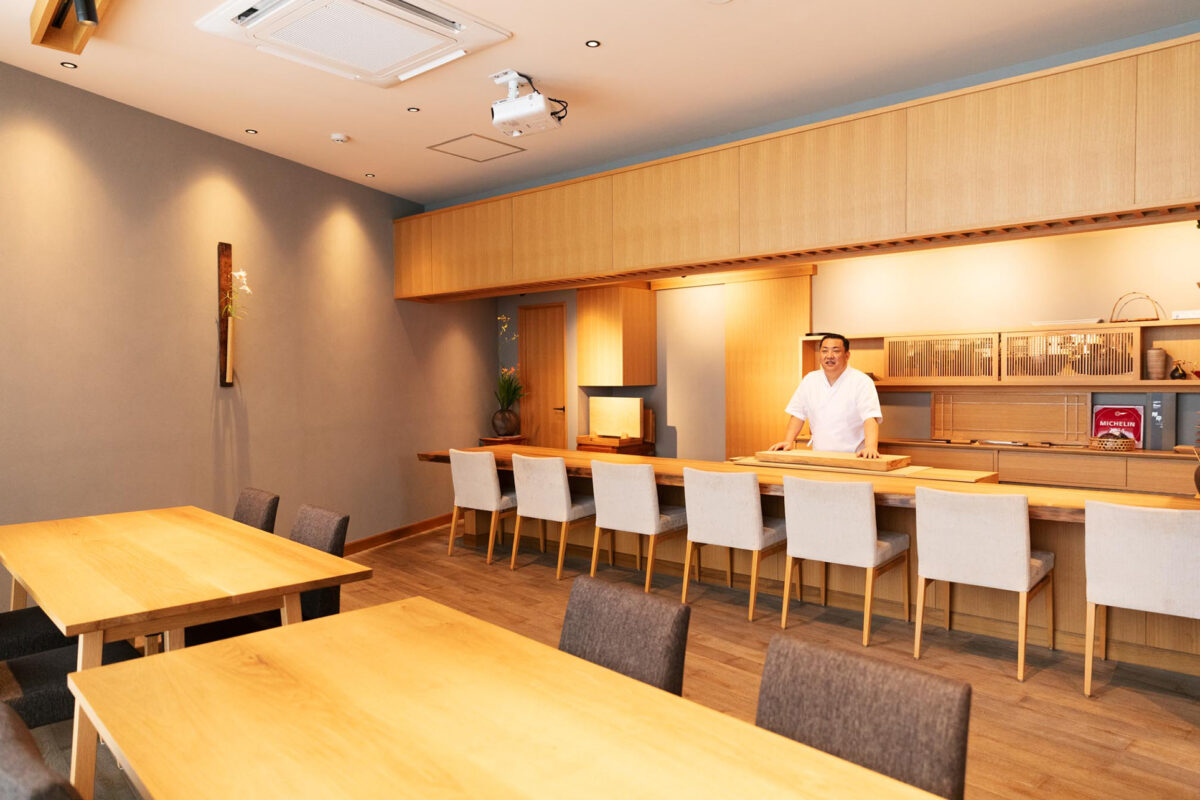
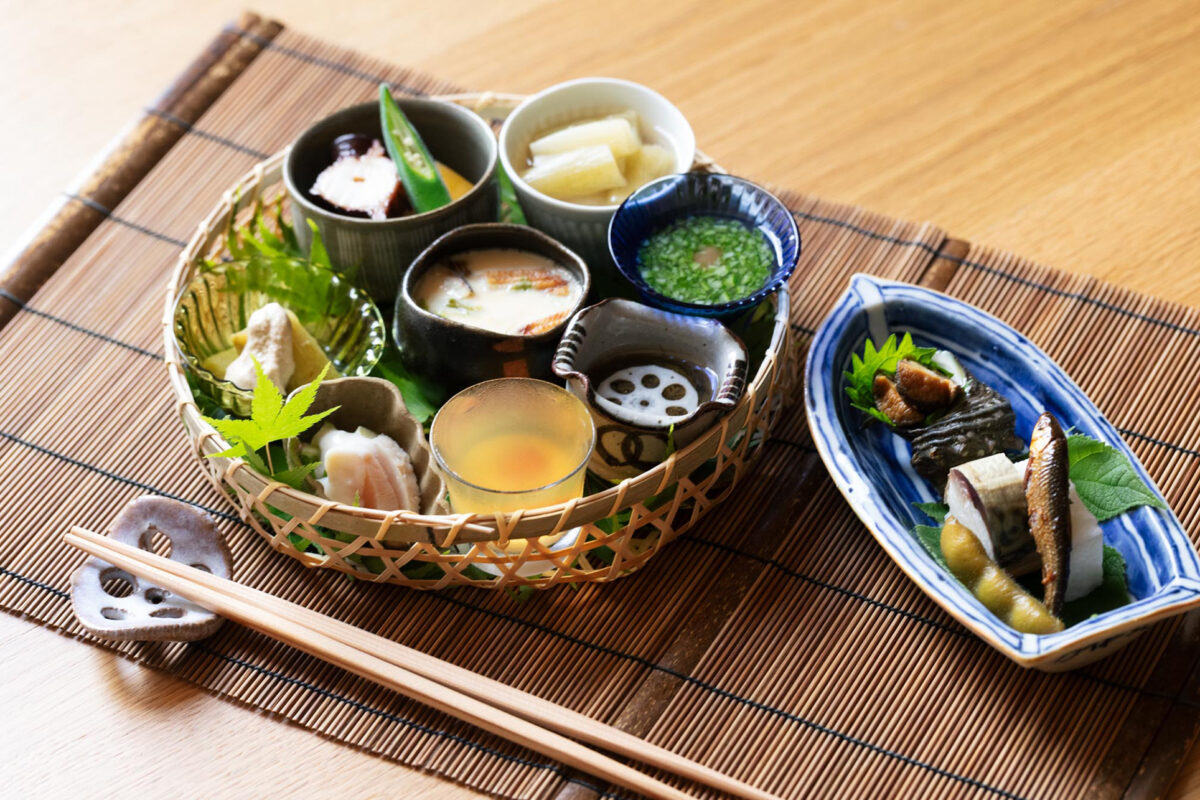
“Subtractive cooking” that has been honed over the restaurant’s history and the chef’s career
The restaurant has been open for 17 years. As I grow older as a Japanese chef, the dishes I serve have become simpler. Today, Tokyo is overflowing with restaurants, and there are many customers with discerning palates. For people to say, “That restaurant is unique,” I feel that I have to further sharpen and evolve my own cuisine compared with what I served over the past 5 to 10 years. Because of the simplicity of the components, I source local kombu (dried kelp) and bonito shavings that form the foundation of the soup stock of considerably higher grade than I did in the past. I personally visit the Toyosu Market every day to select our fish, and I also order seasonal ingredients from the Tango Peninsula of Kyoto and other areas so they don’t overlap with other restaurants.
There’s no end to cuisine. But intervals are necessary. While it’s important for our guests to enjoy each and every moment, I strive to create a taste that people will recognize as the unchanging flavor created by Hashimoto whenever they visit. Since turning 50, I’ve become more focused on the art of “subtractive cooking” as I go to the kitchen. The new restaurant does not have private rooms, and to the extent possible, I avoid taking reservations until it is full. I am conscious of creating a space where each and every customer can receive personal attention.
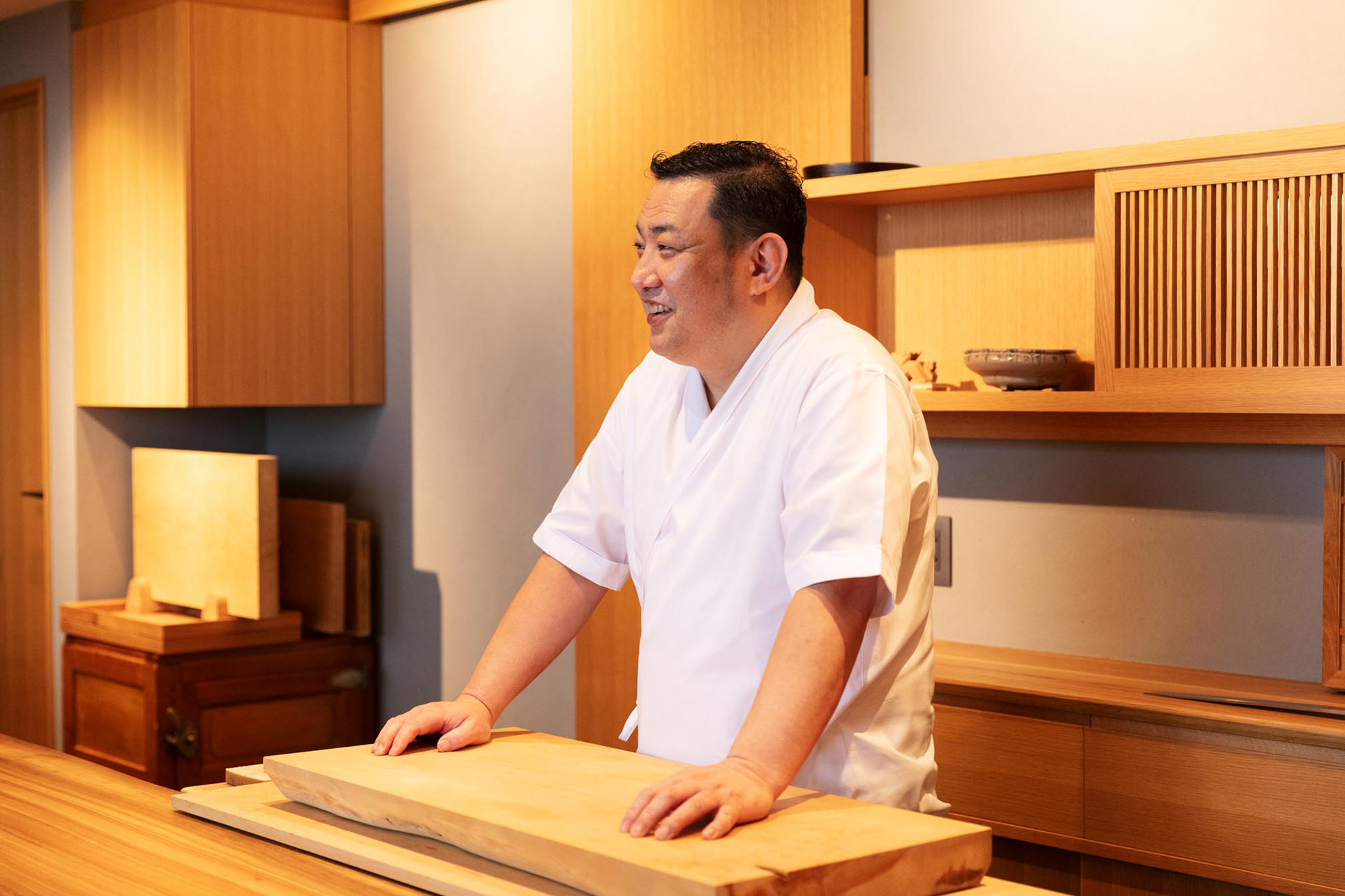
Visiting the countryside and tasting the local flavors. How to incorporate that feeling into the dishes
Japanese cuisine is rooted in seasonal traditions. There is an expression that goes, “five flavors, five colors, five methods*.” My cooking is also based on this concept. When hamo (pike conger) is in season, I serve hamo; when it’s crab season, I buy it. I travel across Japan, experiencing the local flavors, always thinking about how to incorporate them into my own dishes, while valuing the hand crafting that follows the flow of the seasons. I believe the overseas guests who come to my restaurant want to eat the same dishes as Japanese people. With a rooting in traditional cuisine, I do not rely on ingredients, but rather build a menu based on the condition of the ingredients, the climate of the year, and culinary trends.
Many chefs from abroad come here to learn. A chef who visited recently was impressed with the homemade molasses. I source cane sugar from Kikaijima, and then add more and more of it to the molasses as it matures. This is truly a culture of maturation created by Japan’s climate and humidity. This may be an opportunity to introduce Japanese cuisine to people overseas at this very moment when interest in Japanese ingredients is rising.
*The basics of flavor, colors, and cooking methods that are valued in Japanese cuisine.
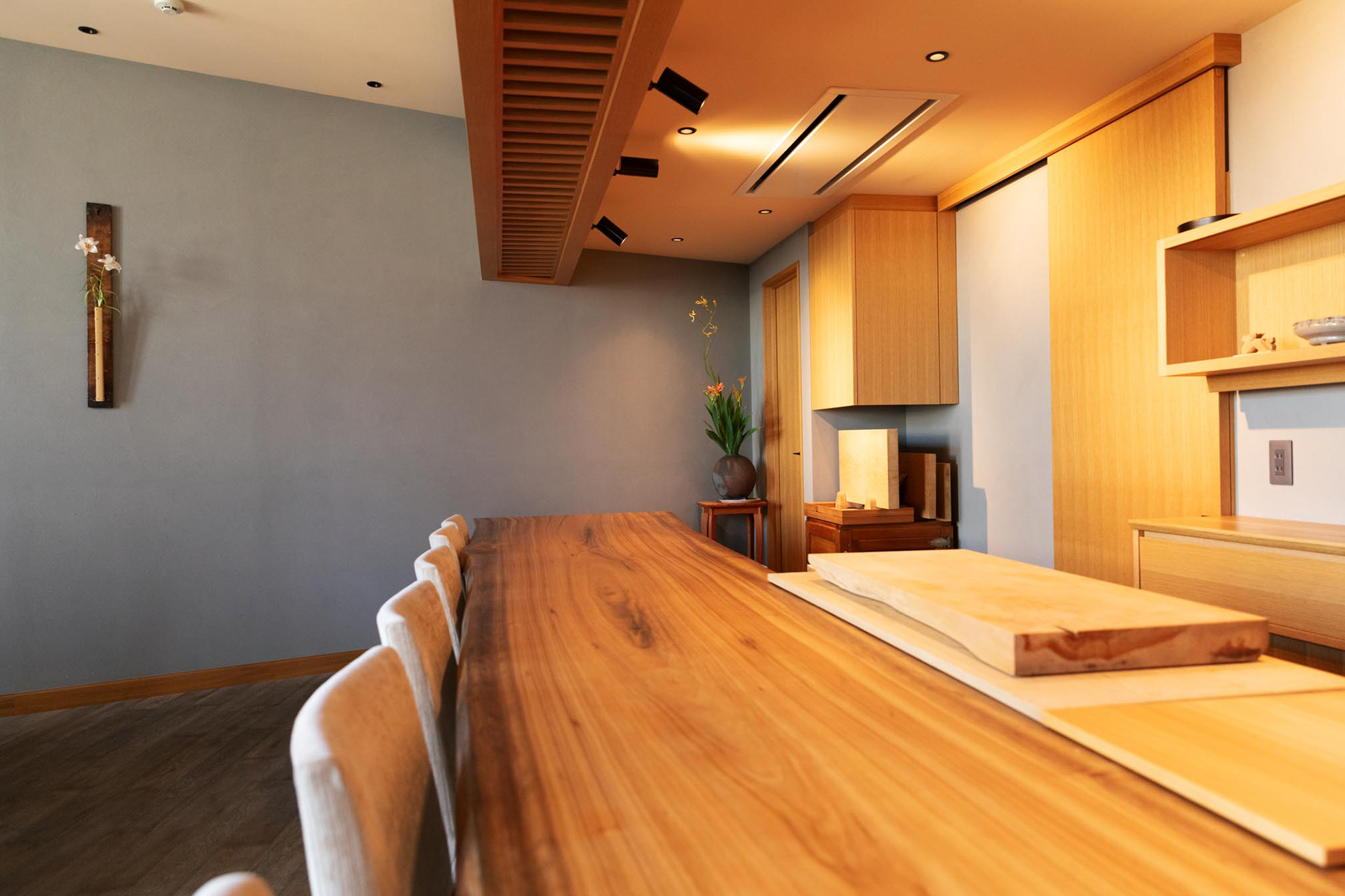
Omakase (Chef’s Choice) Course and The Essence of Ichirin, Mamezara Hassun
The item that expresses my approach to cooking is Ichirin’s signature Mamezara Hassun. It consists of tiny dishes filled with generous portions of lightly boiled and marinated seasonal vegetables, nikogori (a gelatinous dish similar to aspic), and steamed items. It’s popular and I often received requests from guests asking, “Is there a course where we can just enjoy the hassun?” To address this, after soup starter, I serve sashimi, followed by the hassun.
I believe there is a difference between a meal that is delicious and one that leaves an impression. Of course, deliciousness is important, but I also try to create a presentation that will help people remember the changing seasons. For example, using airy baskets in the summer and decorating them with green autumn leaves that can only be seen during that season. Each preparation takes a lot of time, but the moment I see the customer’s surprise when a dish is presented and hear “Wow! Delicious,” that’s a chef’s ultimate reward. Then, depending on the season, I serve a hot dish, followed by grilled fish, and finally rice pot-cooked rice to conclude the course. Although the basic composition is fixed, I sometimes improvise and change the number of items while communicating with customers.
The pot-cooked rice is almost always white rice. I think the starting point is white rice when one tries to define the intrinsic deliciousness of rice. I want people to know the sweetness and umami of the rice that Japanese people eat daily, so I serve a simple combination of freshly cooked white rice, miso soup, and homemade pickles.
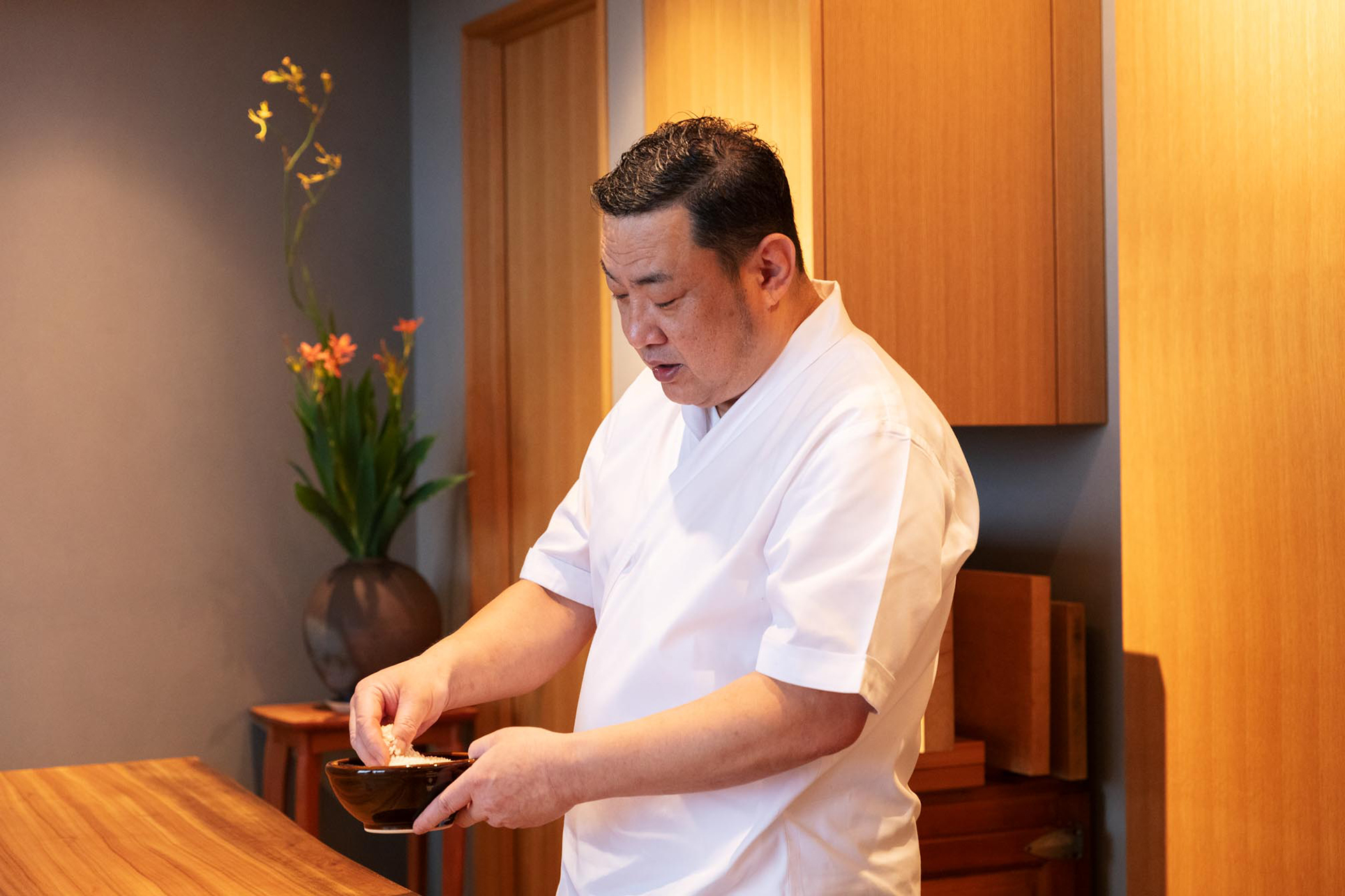
Learning the depth of Japanese rice from rice paddies and farmers
The pot-cooked rice I am currently serving from Wakai Noen (farm) in Ryuo, Shiga Prefecture. When I first tasted it, I was amazed and thought, “what a difference!” The rice paddies are currently cultivated by Yasunori Wakai, the 16th generation of his family, are truly vast and beautiful. The rice is grown without agrochemicals or chemical fertilizers by using a cultivation method called “winter-flooded rice paddies,” in which the rice paddies are flooded during the winter to purify and regenerate the water and soil with the help of various living creatures, including protists, frogs, and waterfowl. I have visited the farm many times, and while Mr. Wakai is caring for the rice stalks, I look at the water in the fields and find fairy shrimps (small crustaceans that live in rice paddies), and I realize that the fields are healthy. Since the farm grows many varieties of rice, I taste-test several varieties of new rice sent to me each year and decide which variety to use based on the amount harvested and other factors.
One thing I have decided is to make visiting the farmer’s home to cook rice an annual tradition. My aim is to share the potential of the rice we are currently transacting by giving the farmers a direct feel for the performance of the rice.
Incidentally, the restaurant uses “silica water” for soaking rice and cooking. The water contains silica (a mineral), and by using water with high mineral content, the contours of the rice are clearly defined and each grain has its own distinct character. If possible, I think it is best to use water from the land where the rice was grown. That’s how important I believe that water is for rice.
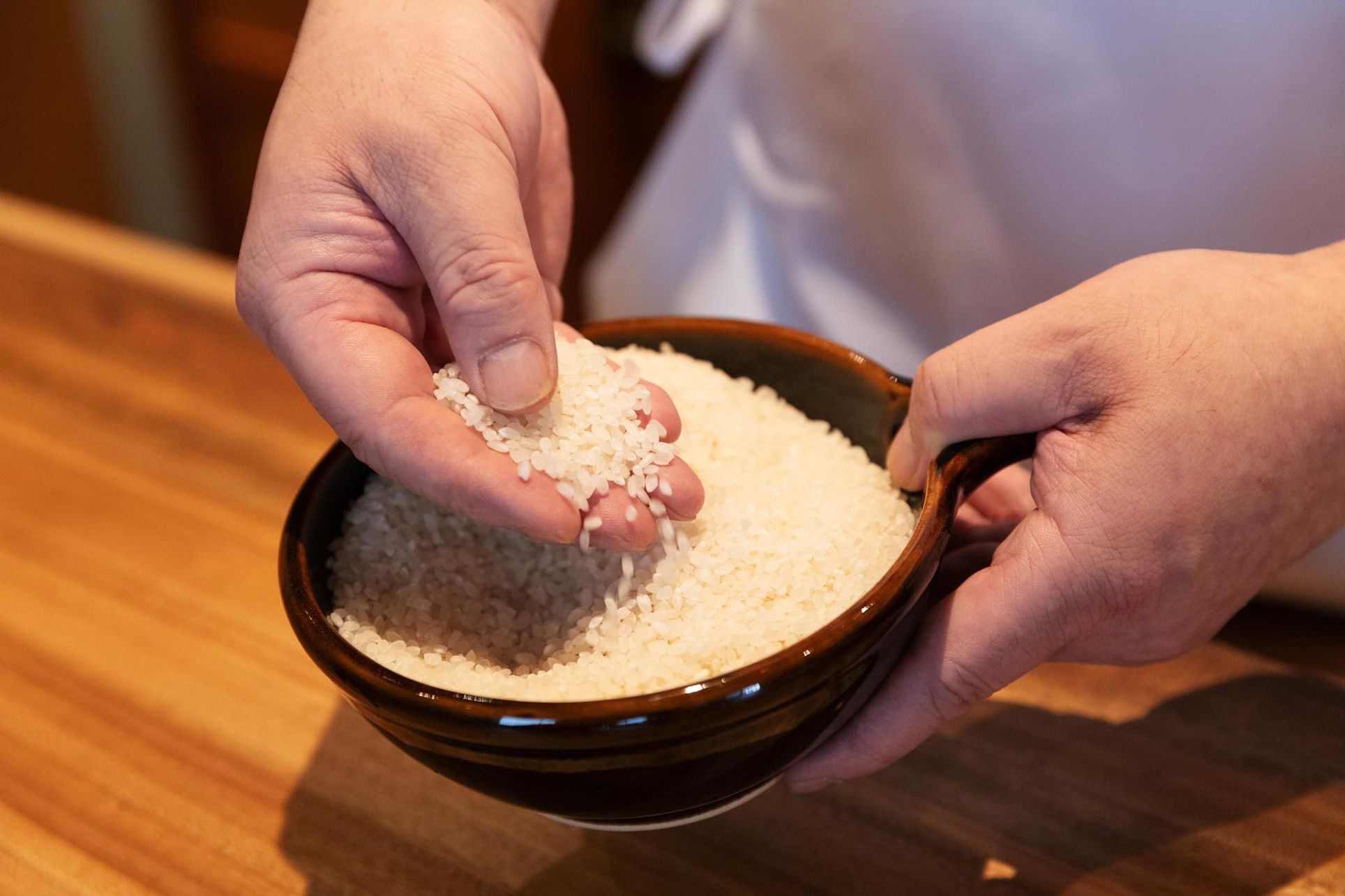
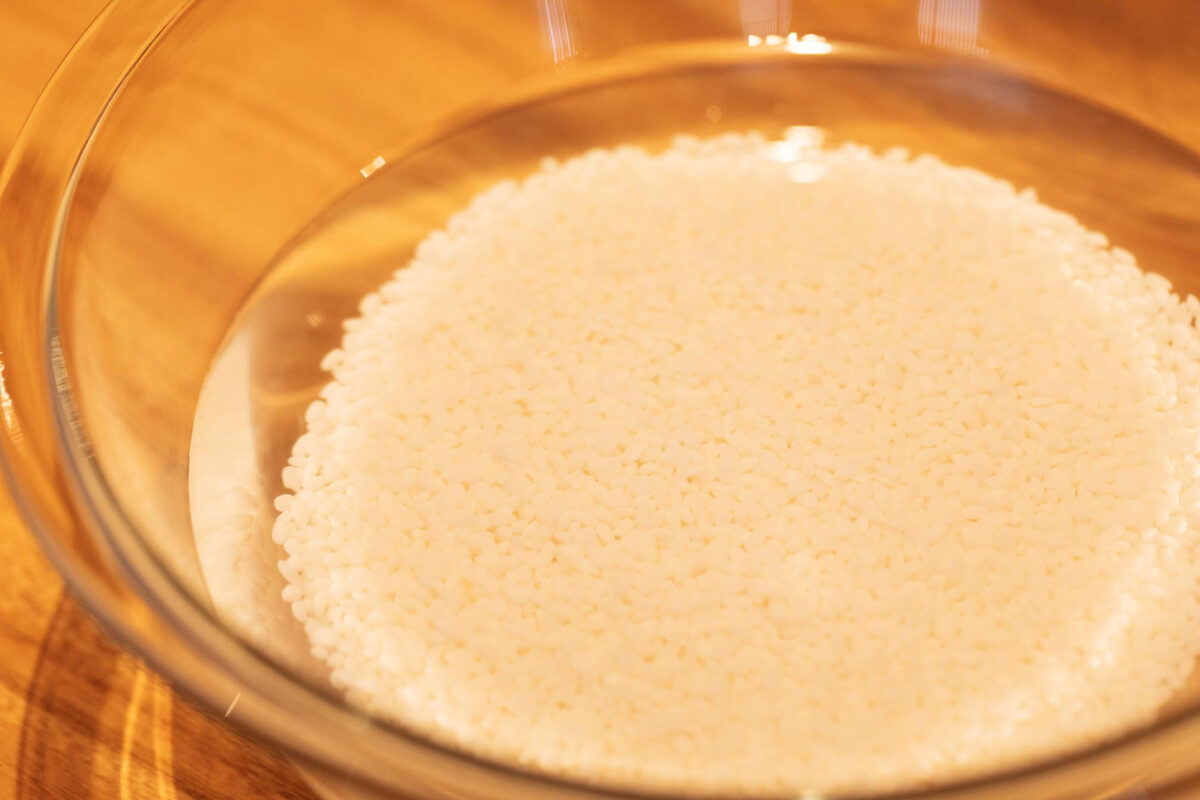
Proudly showcasing the best of the Japanese archipelago that attracts interest from around the world
I have heard from fellow chefs and others that awareness and interest in japonica rice is growing in the United States and in European countries. Yet it is still not well known that there are so many rice varieties in Japan. Not only as a simple brand variety, but also as varieties suitable for cooking, for sushi rice, and for the local Kyushu dish, keihan (chicken rice), and so on. Even Japanese people do not know that they can choose rice according to the type of cooking. The farmer I mentioned before actually grows Thai rice as well. In this way, it is the Japanese people and the Japanese climate that can produce rice for different purposes.
What I want to communicate to the world are the cultivation techniques of the farmers who grow high-quality Japanese rice and the traditional Japanese cooking techniques that give the best expression of that rice. For example, the process of steaming appears in the recipe in this article. Even though the act itself of “cooking with residual heat” may be conveyed, the sensation of “expansion by circulating steam” may not be understood unless one experiences it. The mixed rice presented in the recipe was compiled in an easy-to-make way, with small Japanese techniques hidden in the details. I did not come up with these techniques; they are culinary wisdom that the Japanese people have taken for granted from long ago. Although the recipe calls for white rice, changing to brown rice gives more of a salad-like feeling, and this dish can accompany ingredients from any country, depending on how they are used. Through this recipe, I hope to convey the attractiveness and techniques of Japanese culinary culture.
I believe that Japanese rice is the most delicious foodstuff close at hand. In other words, it is a masterpiece that is the pride of the Japanese archipelago. In many parts of Japan, there is a culinary culture of pouring soup over rice, such as imojiru in Akita Prefecture and hiyajiru in Miyazaki. In those regions, there’s even a custom of pouring soup over freshly cooked rice and downing it quickly, then savoring a second bowl of plain white rice. To that extent, Japanese rice is a food worthy of pride and an integral part of life. Why has Japanese rice, which is not only delicious but also gives stamina and has a high nutritional value as a food, supported Japan for so long? Rather than forcing my thinking on others, I want to pursue and share ideas while working closely with producers, while considering approaches that are accessible to people overseas.
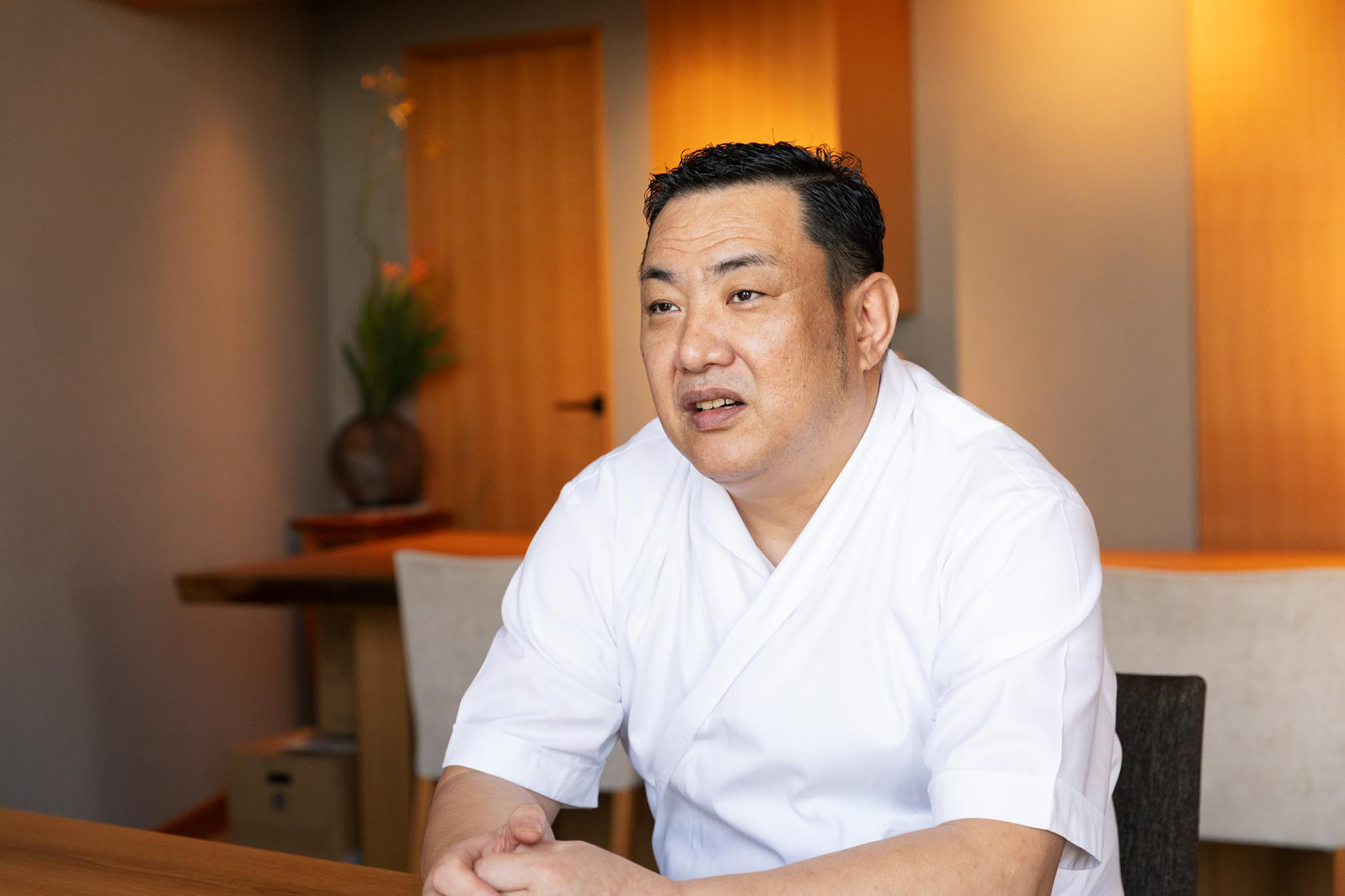
Recommended dish
Mamezara-hassun(served as part of a course meal) 豆皿八寸(コース料理の一品として提供)
A signature dish presented on small plates and bowls that showcases the heart of Japanese cuisine and celebrates the seasons. Kyoto vegetables and seasonal vegetables and seafood sourced from the market are meticulously prepared to express the changing seasons through their appearance, texture, and flavor. The interview took place in summer. The dishes served included chopped okra with tororo (grated mountain yam) broth, roasted eggplant paste, chawanmushi (savory egg custard) with sea urchin and conger eel, and lightly coated white gourd with chicken tenderloin in a light coating.
